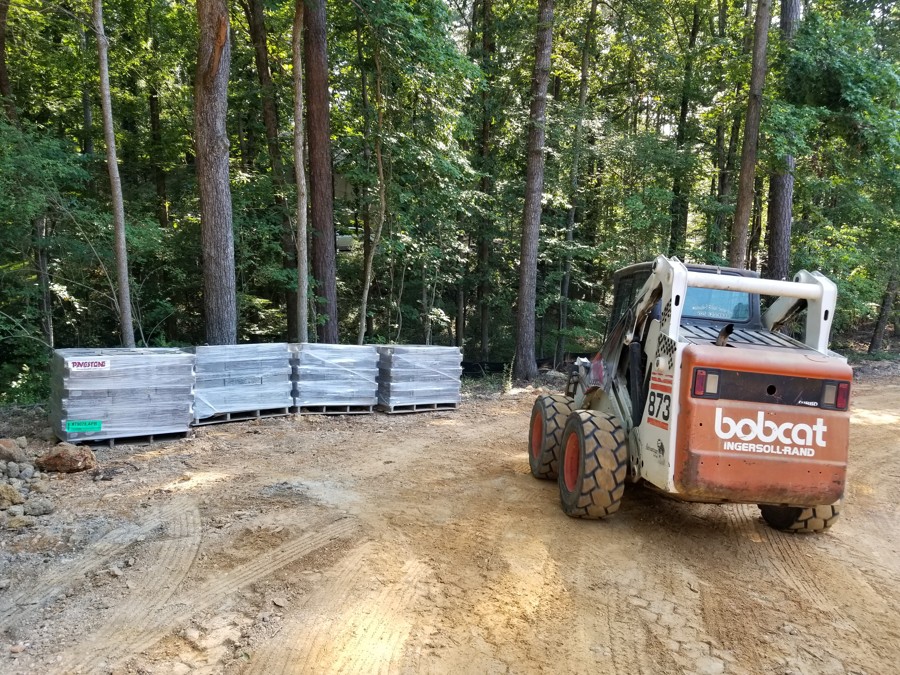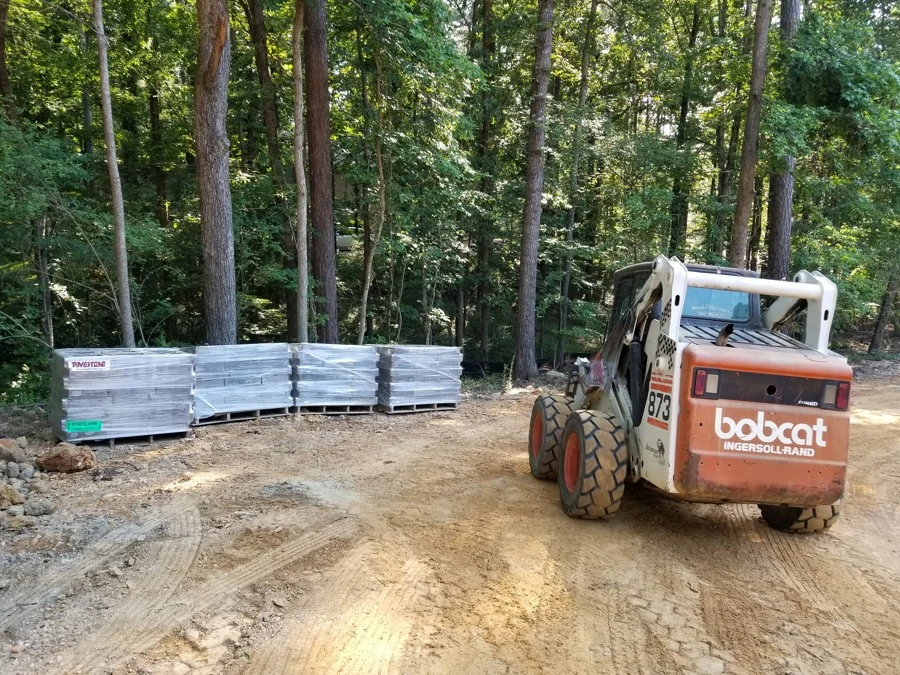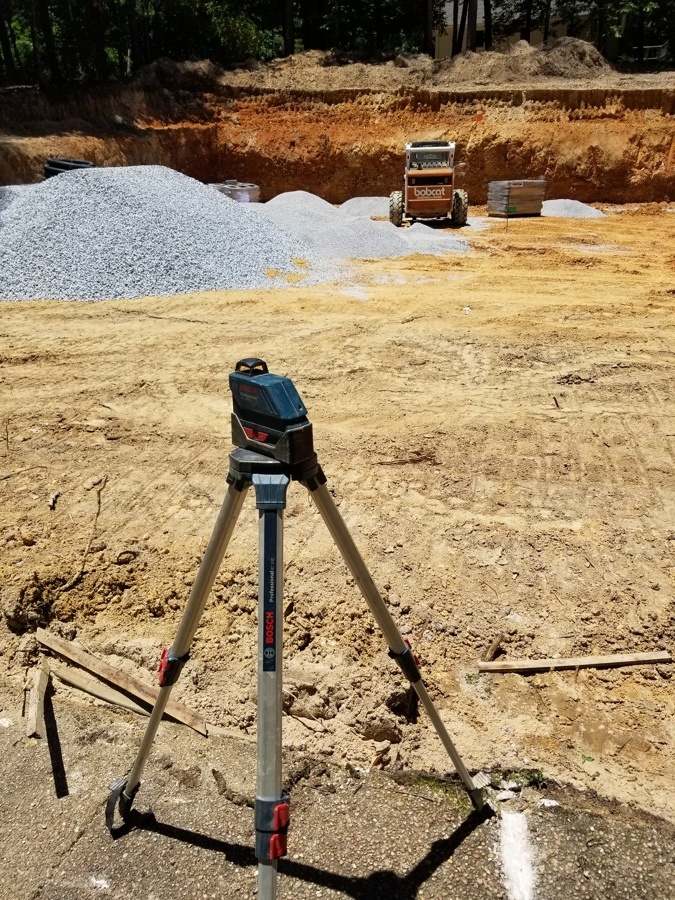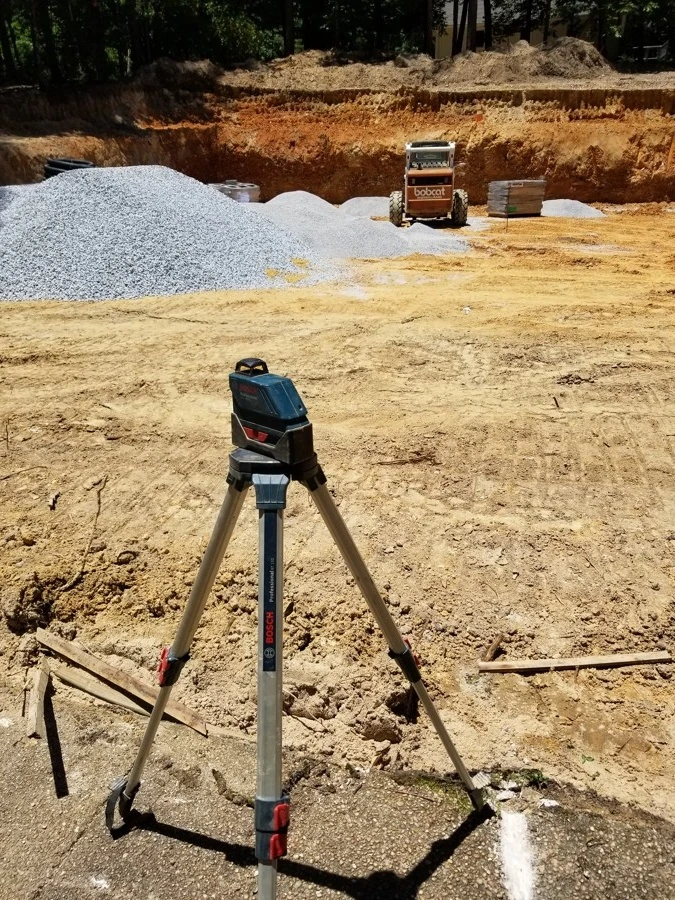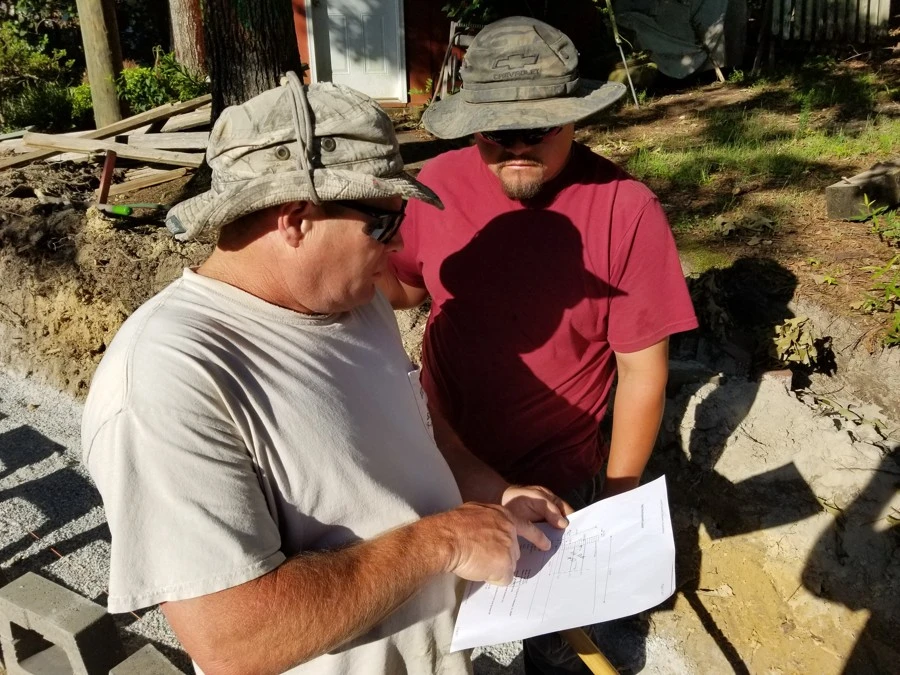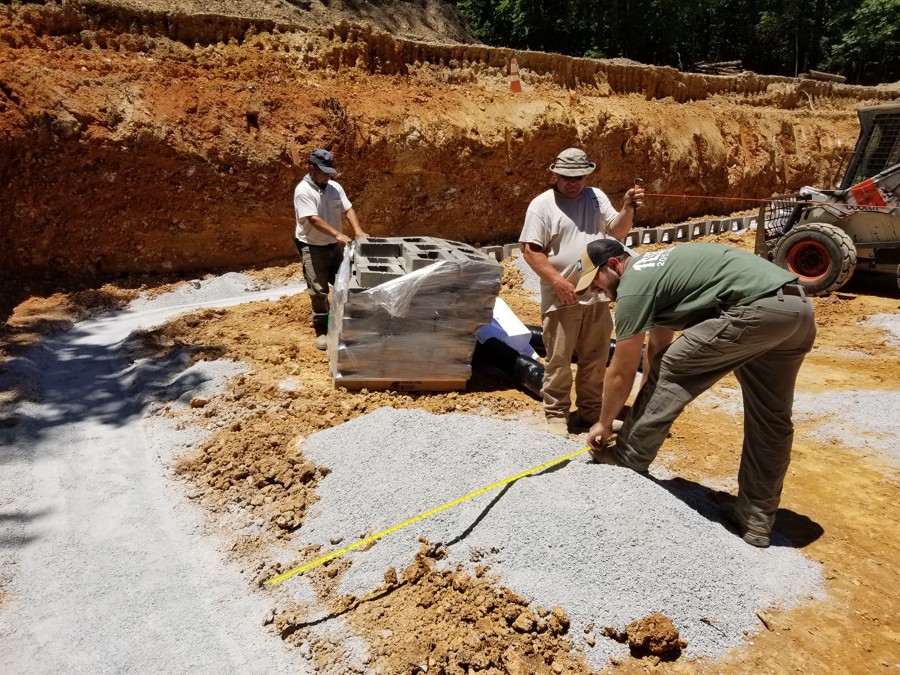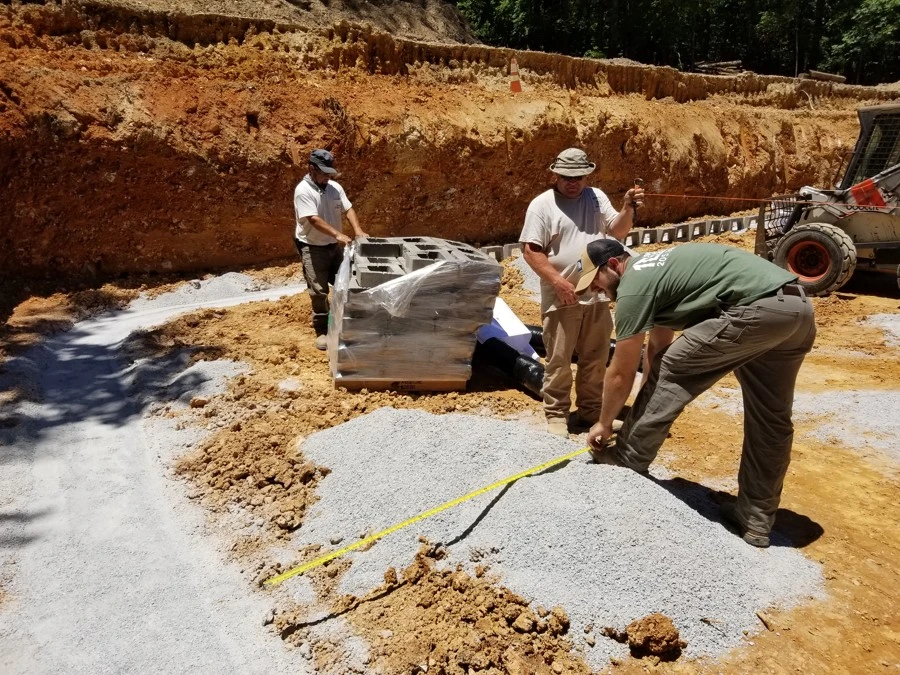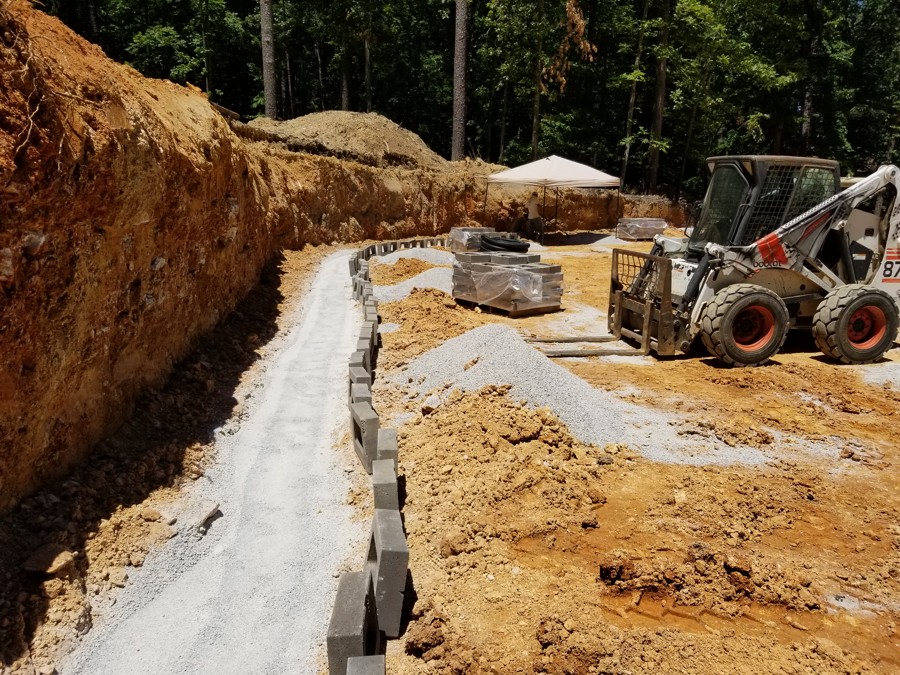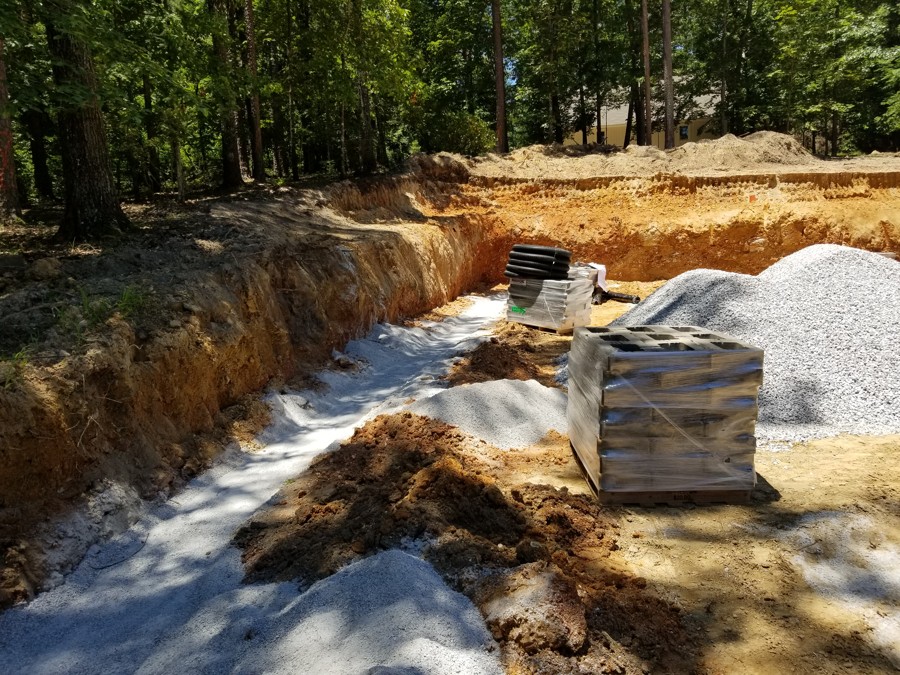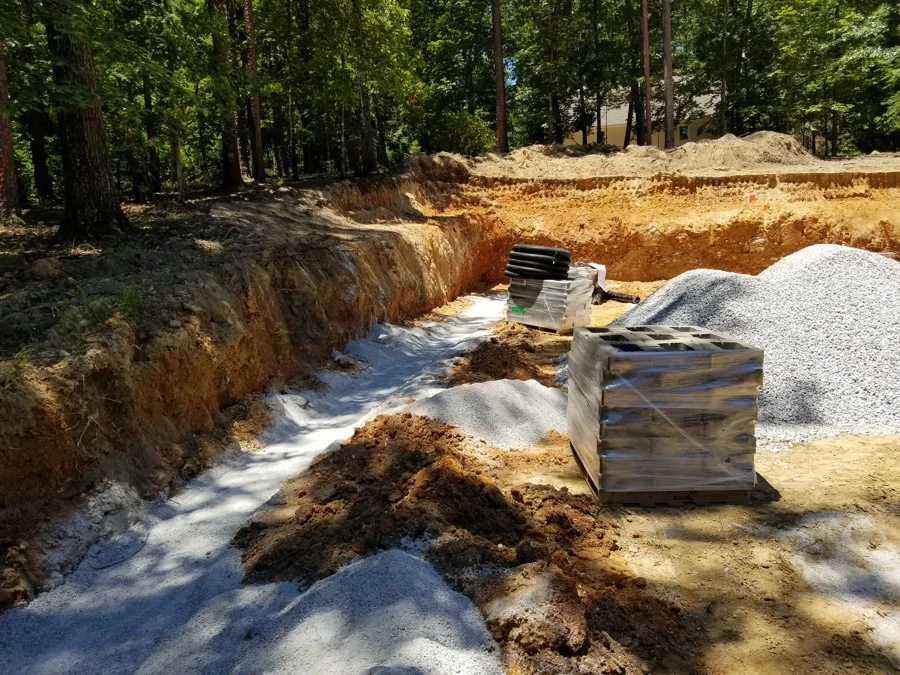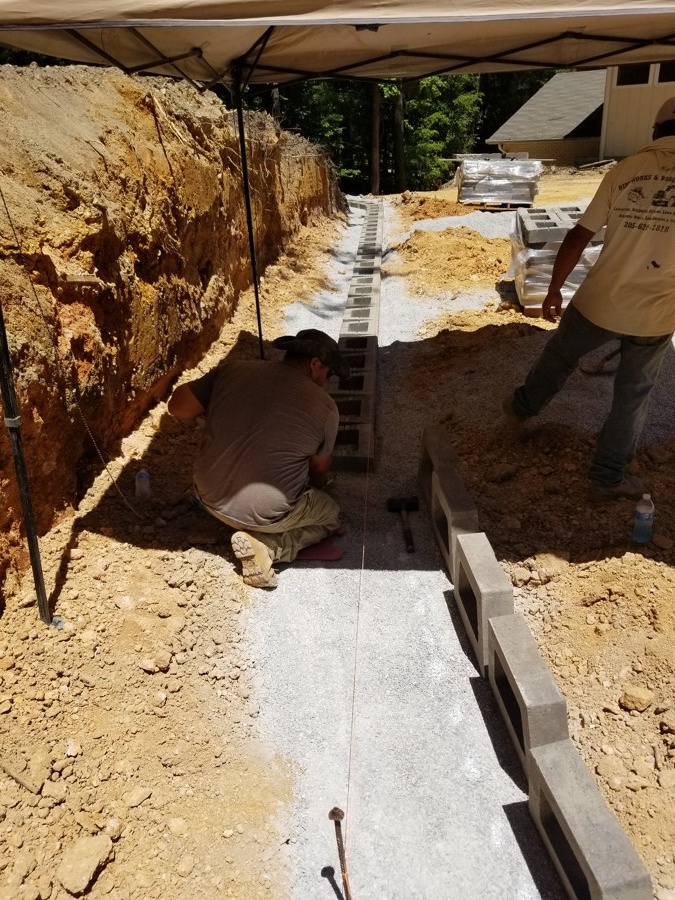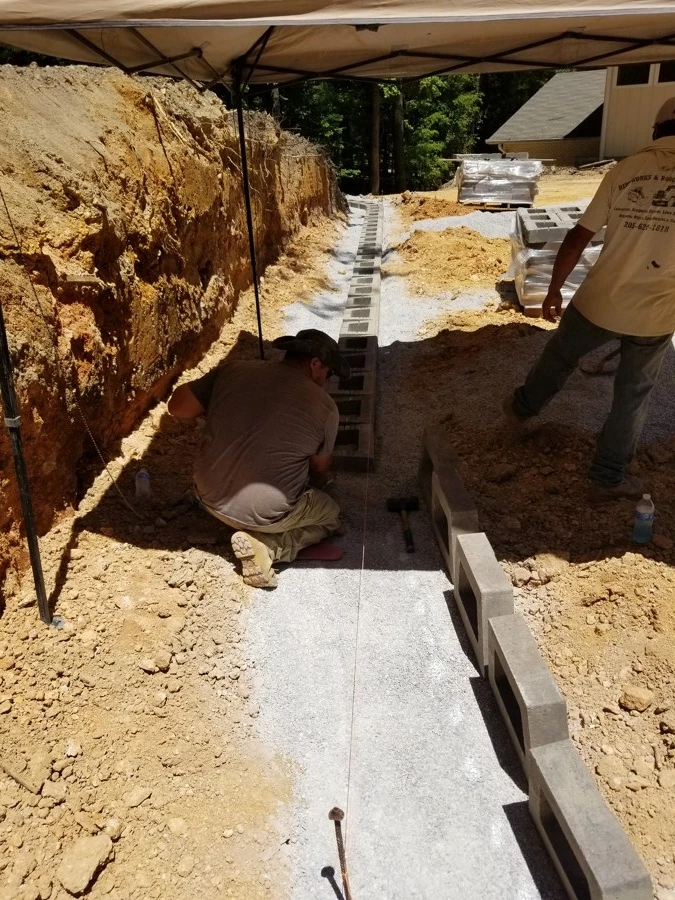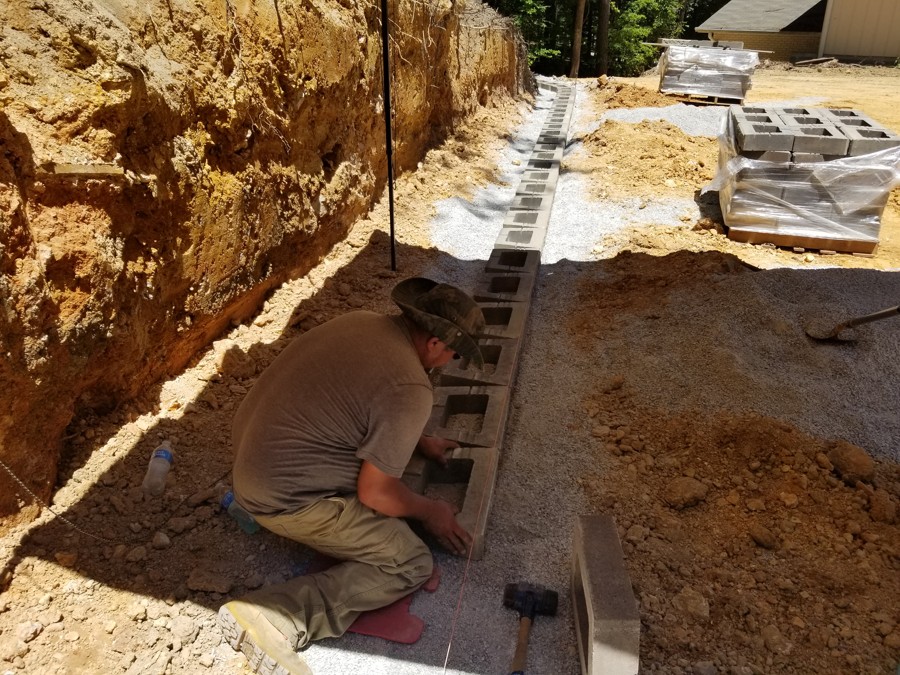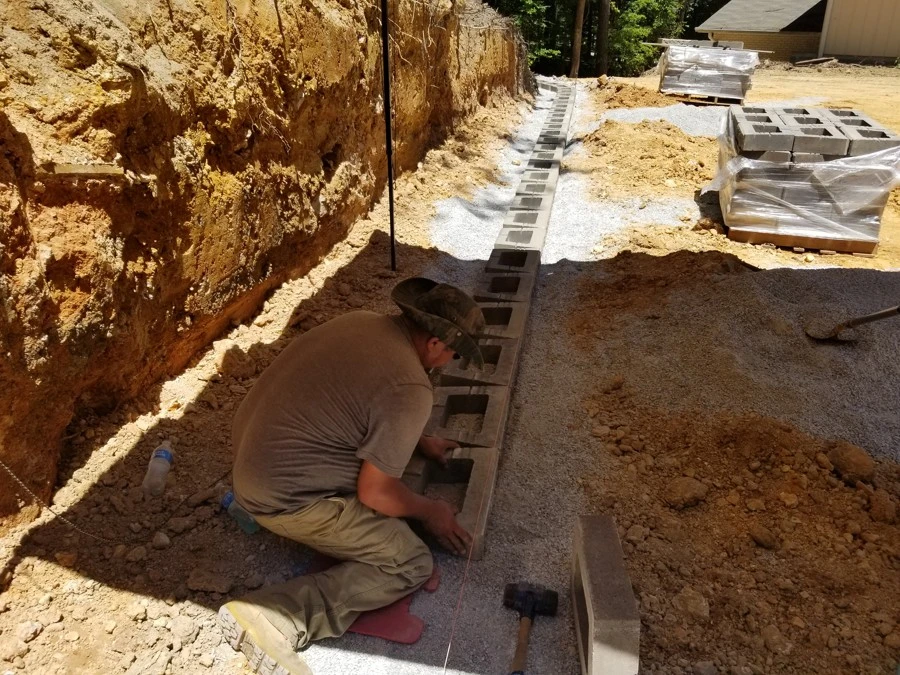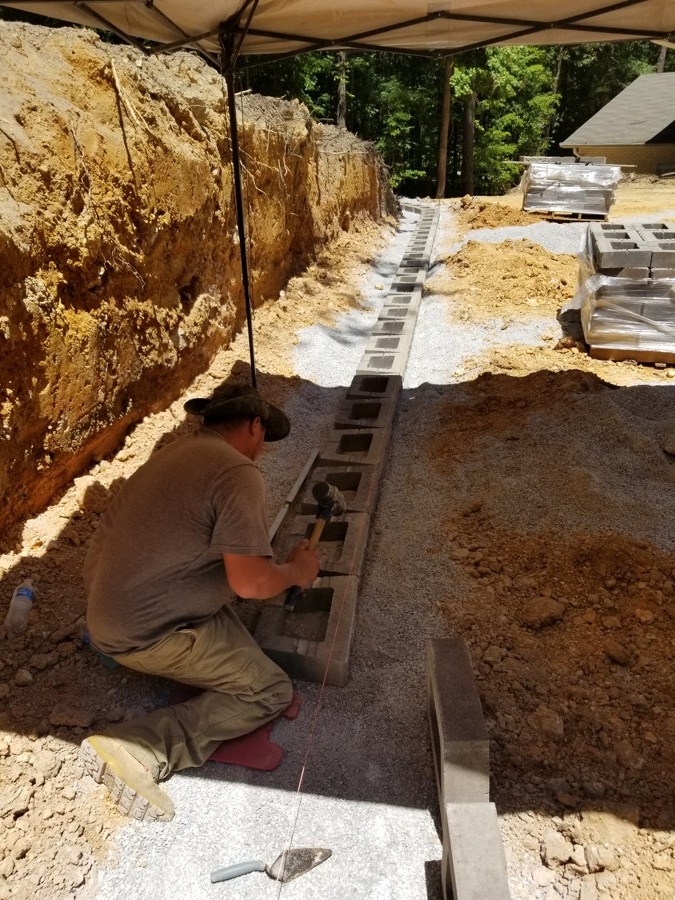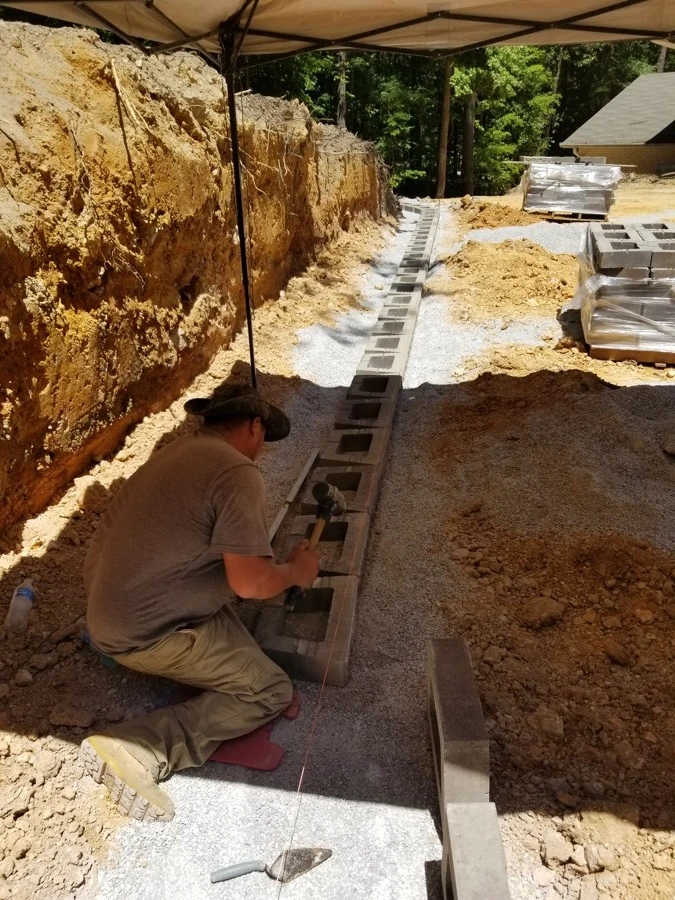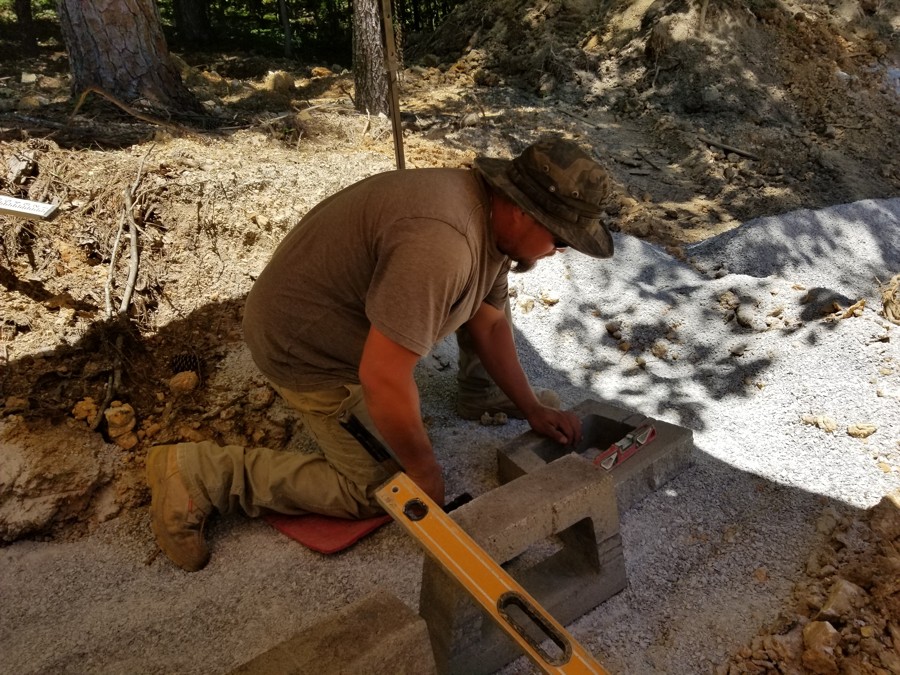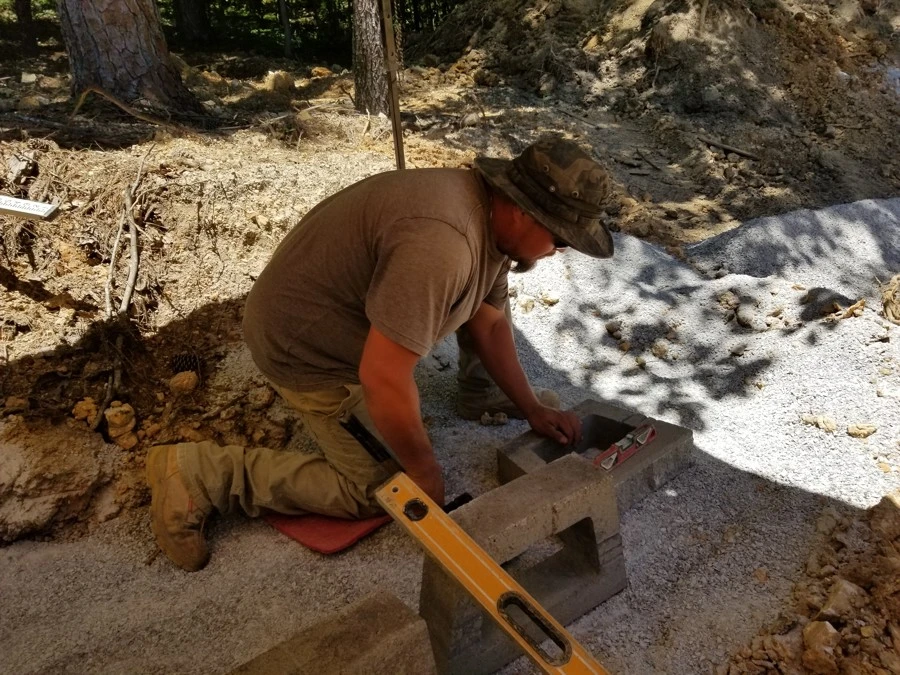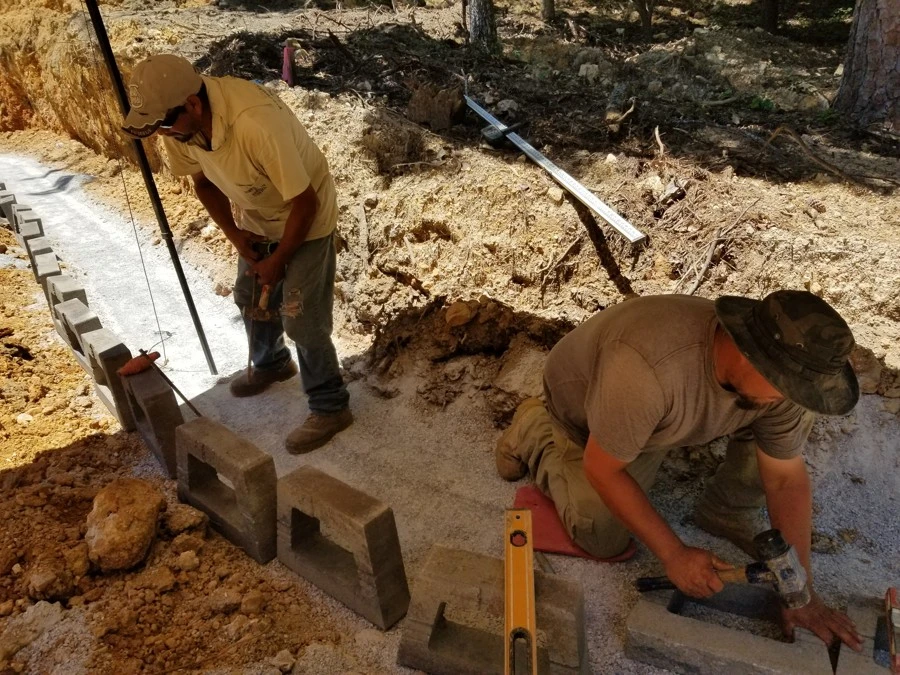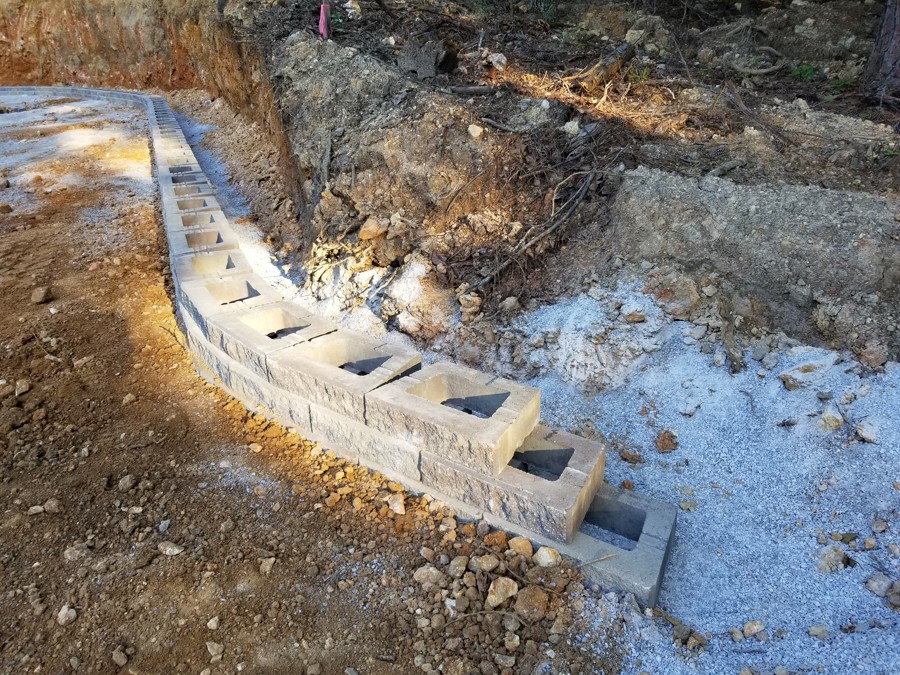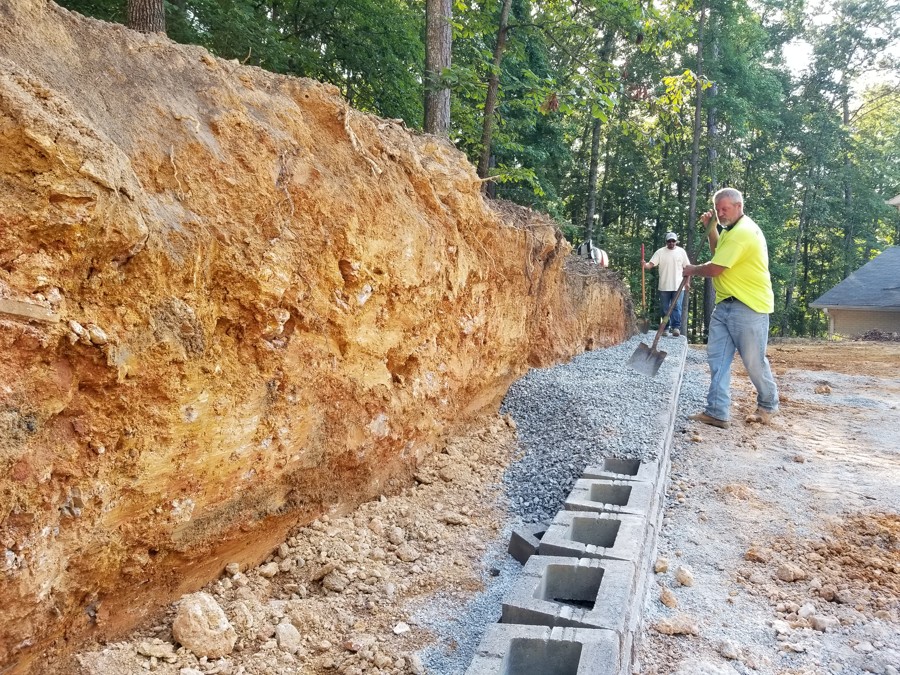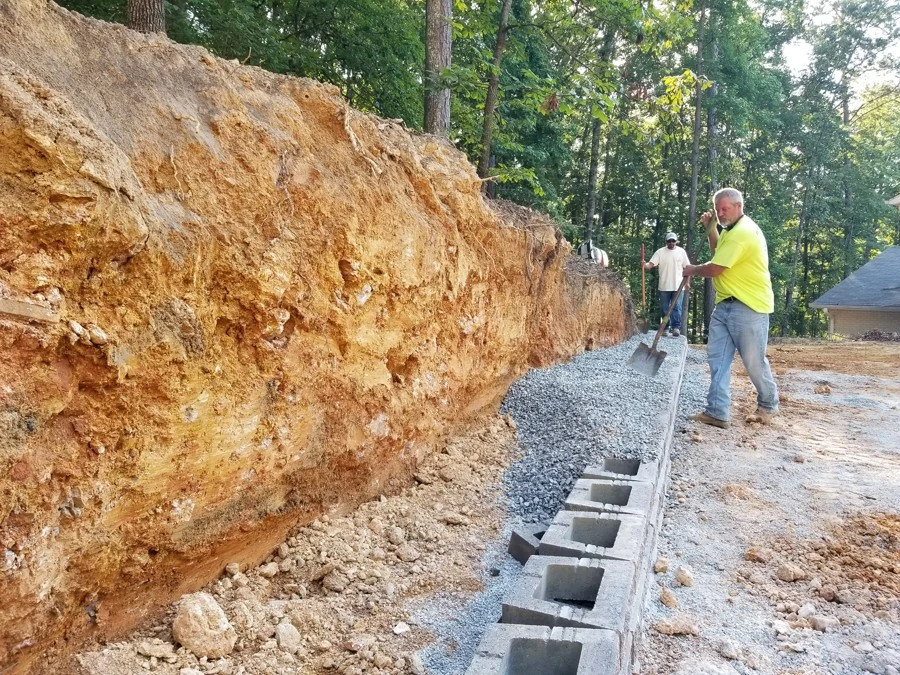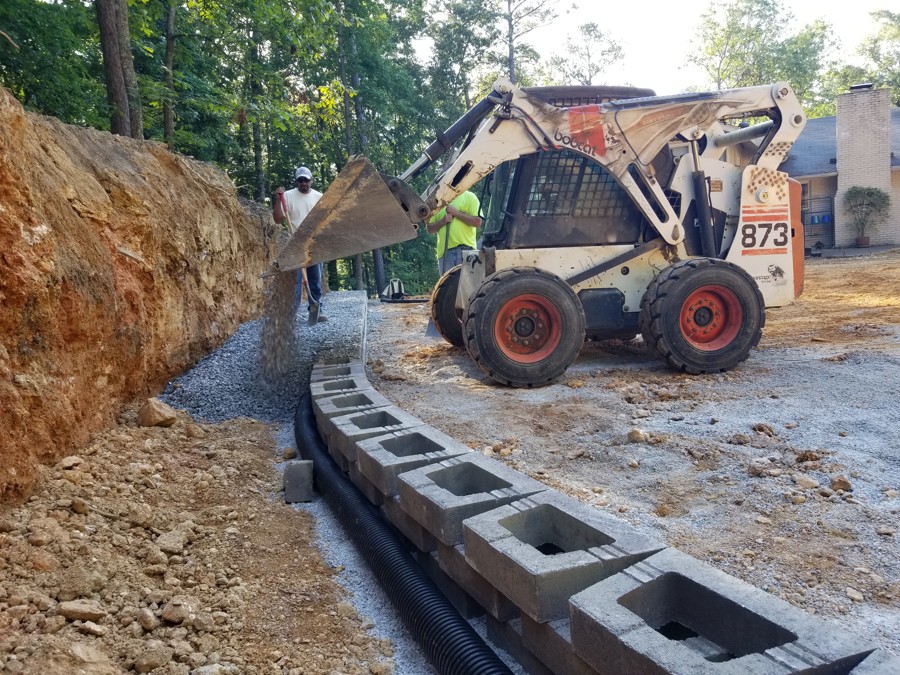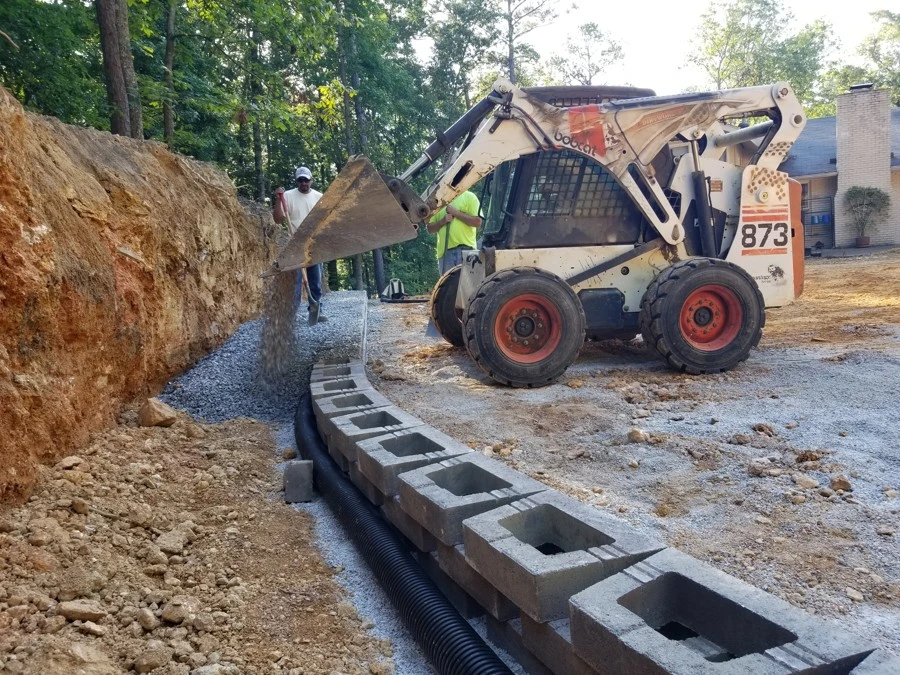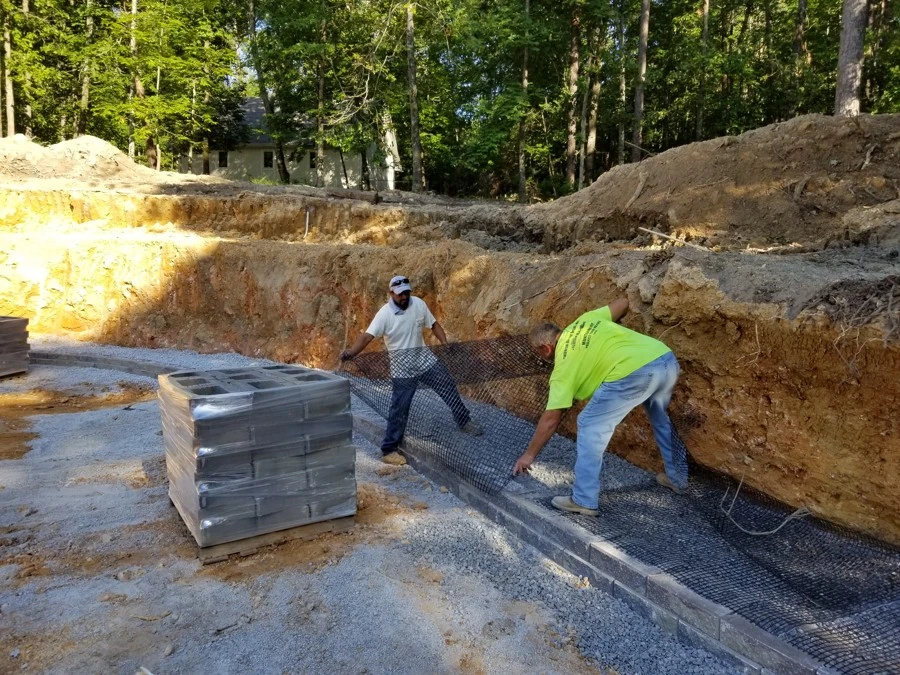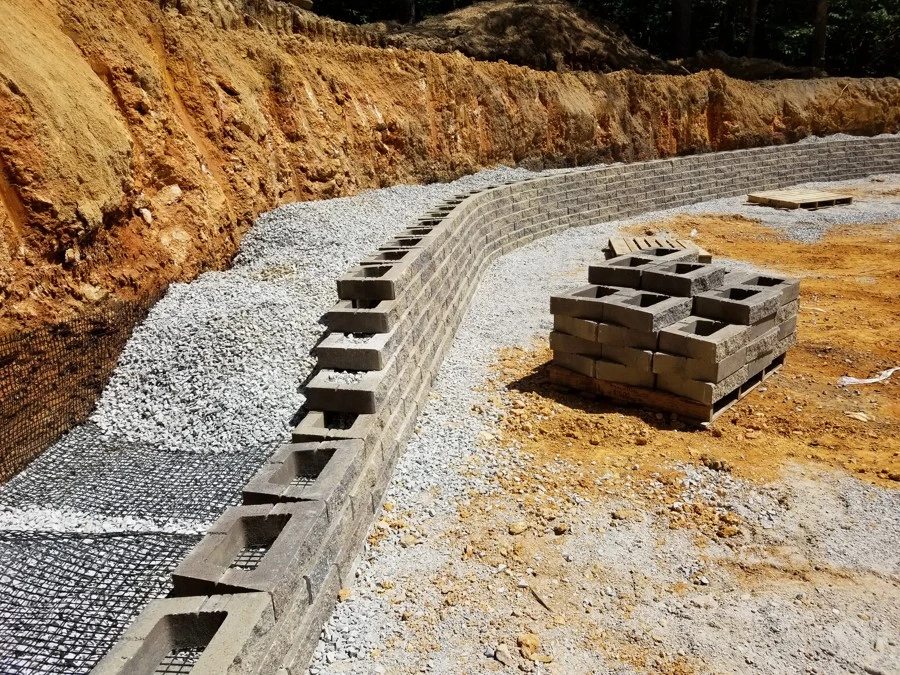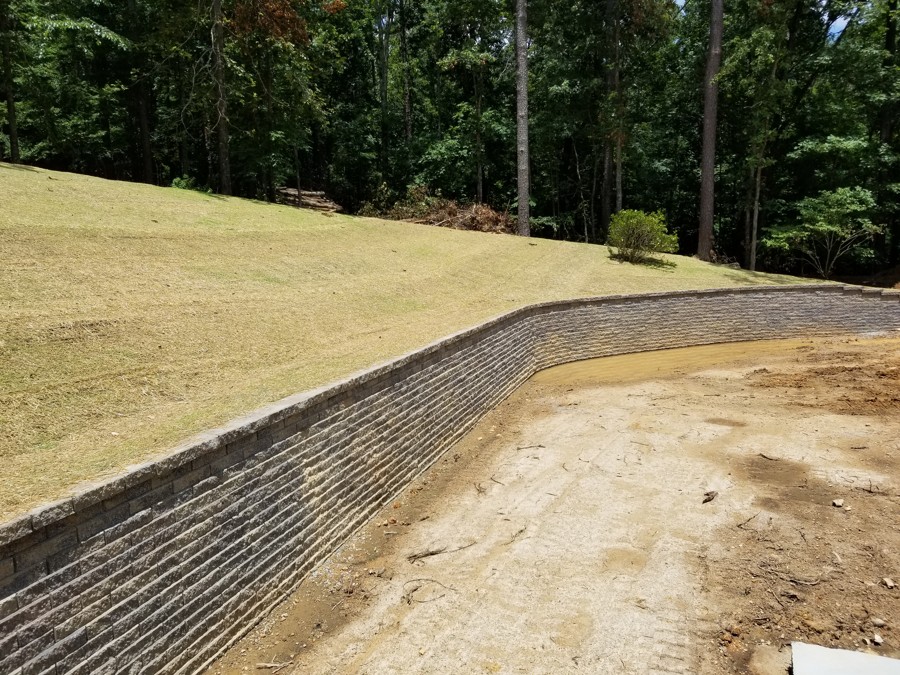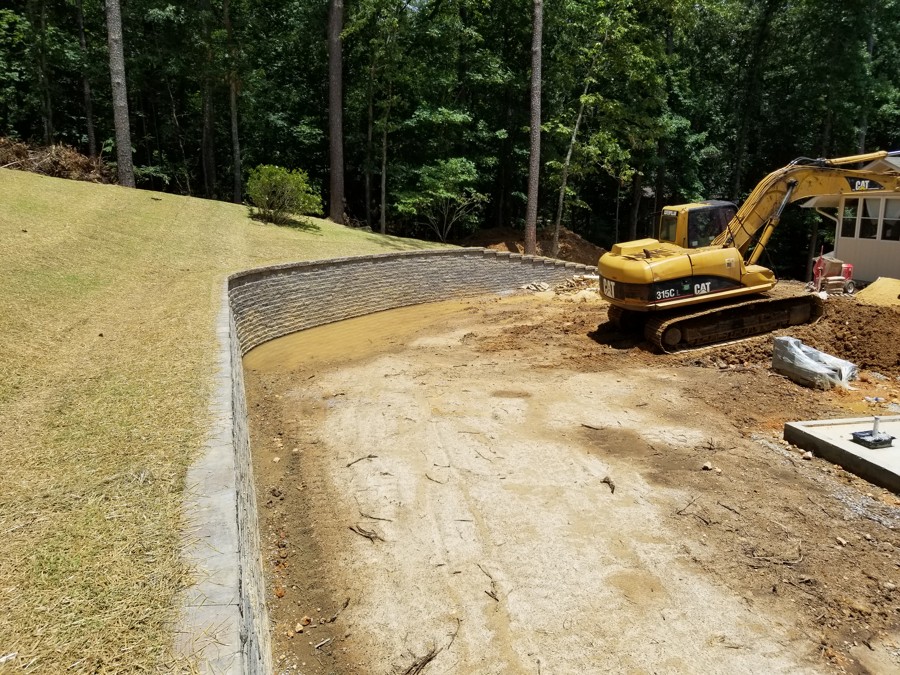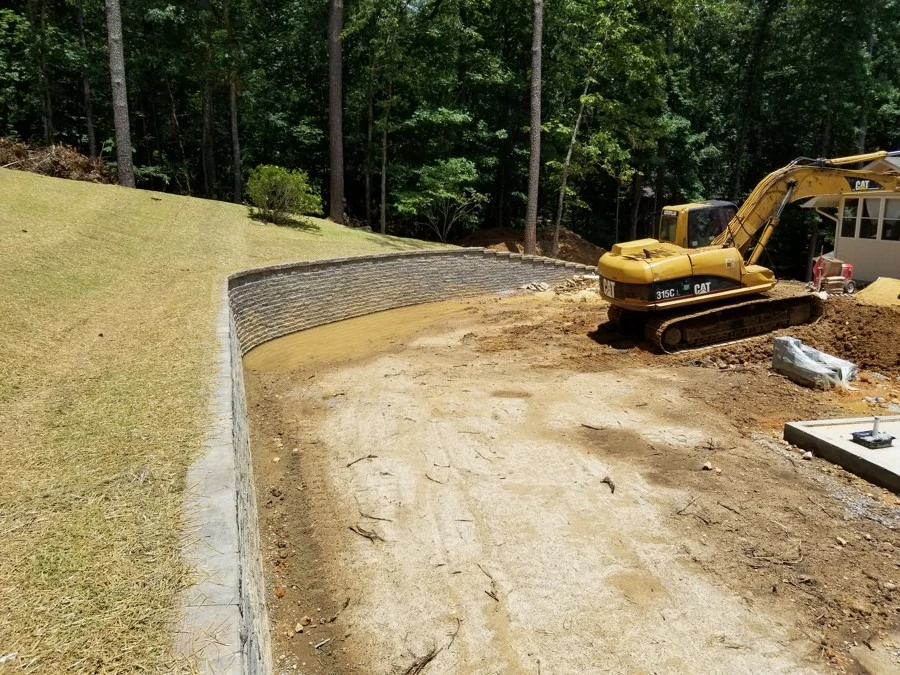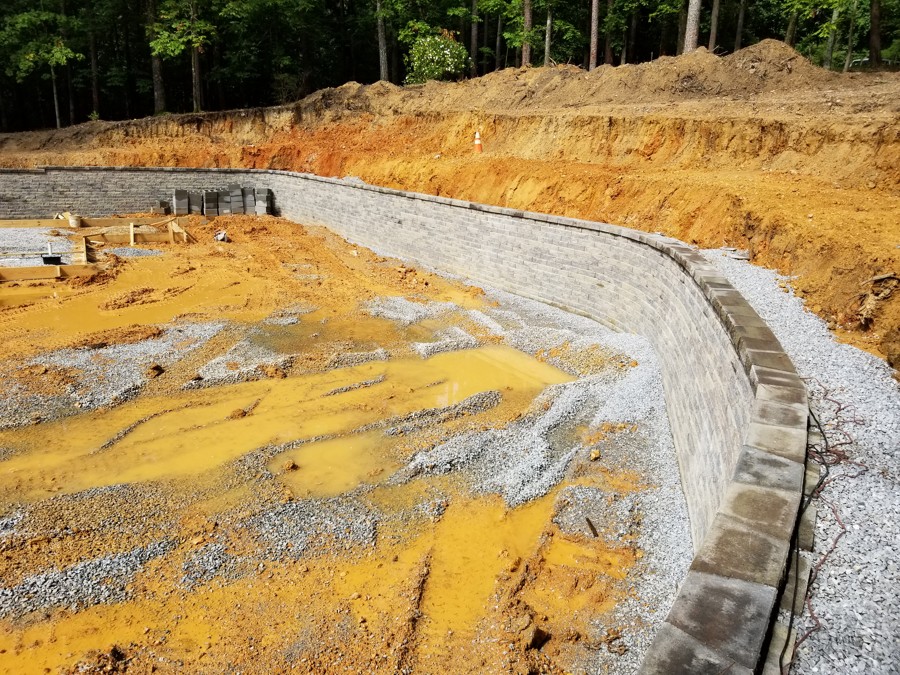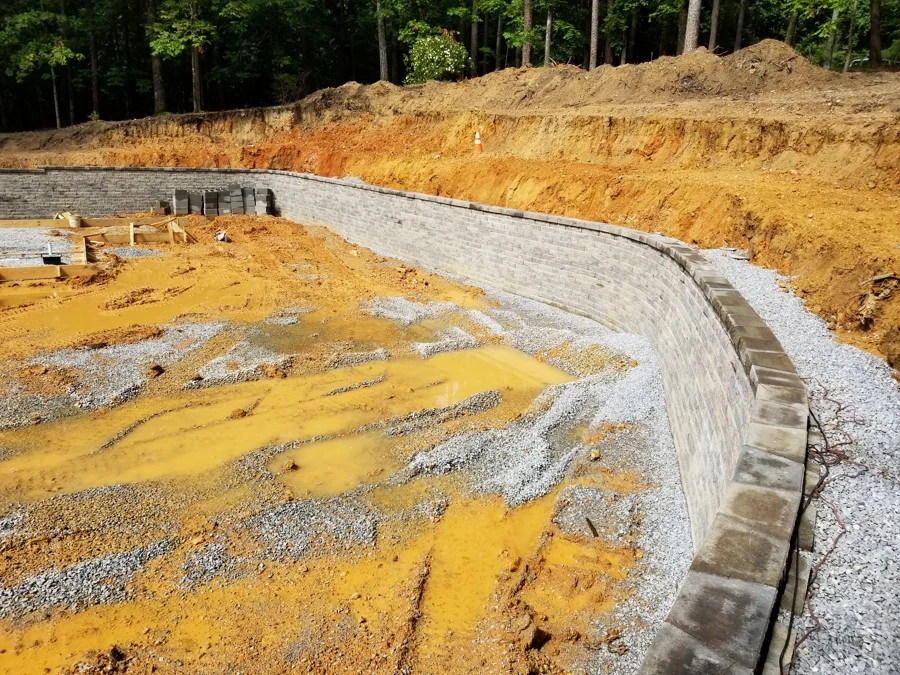The following is an example of a typical retaining wall installation. This wall was built in Indian Springs, Al in summer 2018.
Preparation
The first step in constructing a well built retaining wall is the planning. Our professional team works with the customer to understand what they want and envision. Is the retaining wall wanted for aesthetics or is it needed to prevent/correct an issue. We measure for height, width and depth. Along with our customer, we make important decisions about the retaining wall. Customer desires, as well as safety & durability, are factors when selecting materials for the wall such as wood or a masonry type.
Gallery: 2018 Preparation
Footing
We excavate a two foot wide trench. All the loose soil is removed down to the firm hard ground. The footing depth is determined by the height of the retaining wall.
The most common gravel we utilize is #8910. We usually place between four and six inches of gravel for the footing. Then it is leveled. The success of the retaining wall starts here. Our goal is for the footing to be smooth and level to provide a strong & sturdy base for the wall.
Gallery: 2018 Two Foot Wide Trench
String line
To ensure correct alignment starting with the first row, we run a string line.
Gallery: 2018 Retaining Wall String Line
The first course of stone
When the first blocks are laid, we take the time to precisely level the blocks. This includes front to back and side to side leveling.
Gallery: 2018 The First Course
Filling up with gravel
When three courses of block are properly placed and leveled on the top of each other, the block is filled with #57 gravel. The same gravel is used to backfill.
Gallery: 2018 Filling Up With Gravel
Laying down geogrids
After the first gravel fill we lay down the geogrids. A geogrid is a material utilized to reinforce the soil. It diverts the tension caused by a retaining wall, making the soil stronger.
After laying out the grids, we install another row of blocks. Then we fill the stone and backfill the entire row.
We repeat the previous process until we reach the desired wall height.
Gallery: 2018 Laying Down Geogrids
Finish product - retaining wall
We repeat the previous process untill we reach the desired wall height. The final step is cap block.






